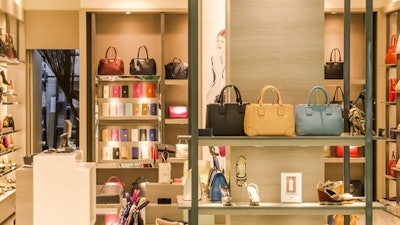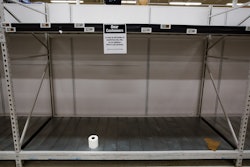
It’s an understatement to say that during 2020, e-commerce underwent 10 years of growth over a matter of months to actually outpace traditional retail channels. For many retailers, this was also a wakeup call that their supply chains do not end when the product reaches their customers; they must also work in the opposite direction. These organizations were forced to strengthen, and in some cases, create entirely new reverse supply chain networks that actually work backward from traditional supply chains, allowing customers to return items back to a physical location.
According to the National Retail Foundation, “Consumers returned an estimated $428 billion in merchandise to retailers last year, approximately 10.6% of total U.S. retail sales in 2020.”
The survey found that “for every $1 billion in sales, the average retailer incurs $106 million in merchandise returns.” The challenge for retailers quickly becomes dismantling, disposing of, repairing, restocking or recycling all these items as efficiently as possible to reduce costs.
However, organizations that have efficiently implemented a reverse logistics supply chain have found new sales opportunities by being more accessible to customers and bringing customers back to a store location is a very successful repeat sales technique. For example, customers who want to upgrade their cell phone products often return to store locations where they purchase the latest device. Having customers return to store locations allows the company to sell complementary products and services.
This is why retailers must have a means to accurately analyze the full chain of custody. There are many “returns” solutions available to assist with this process, but merchants need to carefully consider which specific platform is best suited for their environment.
Perhaps one of the best options to create a successful reverse logistics supply chain is to apply self-serve, contactless solutions. Because the Coronavirus disease (COVID-19) pandemic has removed a great deal of human interaction from the retail experience, this makes an ideal option for shoppers as it gives them the necessary distance they prefer to feel safe while also enabling a means to retrieve or return items. There are platforms that provide shoppers with a contactless buy online/pickup in store (BOPIS) or return experience. These platforms include self-serve, smart-shelving units that notify shoppers when their items have been staged and are ready for pick up. By contrast, the same smart-shelving units can also offer a safe and secure area for buy online/return in store (BORIS), without subjecting the customer to long return lines at the customer service desk. Taking it one step further, retailers may leverage the same platforms for buy online/exchange in store (BOXIS), staging the preferred item for pick up while waiting for the customer to swap it with the unwanted merchandise.
Conclusion
Given the fact that the volume of e-commerce will only increase, it makes sense that implementing a reverse logistics supply chain will help boost business while actually improving the customers’ overall brand experience. However, dealing with all the return logistics doesn’t have to be time-consuming or difficult. Artificial intelligence (AI) and computer-aided logistics are transforming the entire supply chain and streamlining not only the fulfillment process, but also how shoppers return merchandise. This powerful but easy-to-manage technology is creating new loyalty by empowering the customer to take command of the full buying cycle at the well-orchestrated guidance of the merchant. Mastering reverse logistics is indeed a largely untapped area for retailers to elevate their shopper services and bottom line.


![Pros To Know 2026 [color]](https://img.sdcexec.com/mindful/acbm/workspaces/default/uploads/2025/08/prostoknow-2026-color.mduFvhpgMk.png?auto=format%2Ccompress&bg=fff&fill-color=fff&fit=fill&h=100&q=70&w=100)







![Pros To Know 2026 [color]](https://img.sdcexec.com/mindful/acbm/workspaces/default/uploads/2025/08/prostoknow-2026-color.mduFvhpgMk.png?ar=16%3A9&auto=format%2Ccompress&bg=fff&fill-color=fff&fit=fill&h=135&q=70&w=240)






